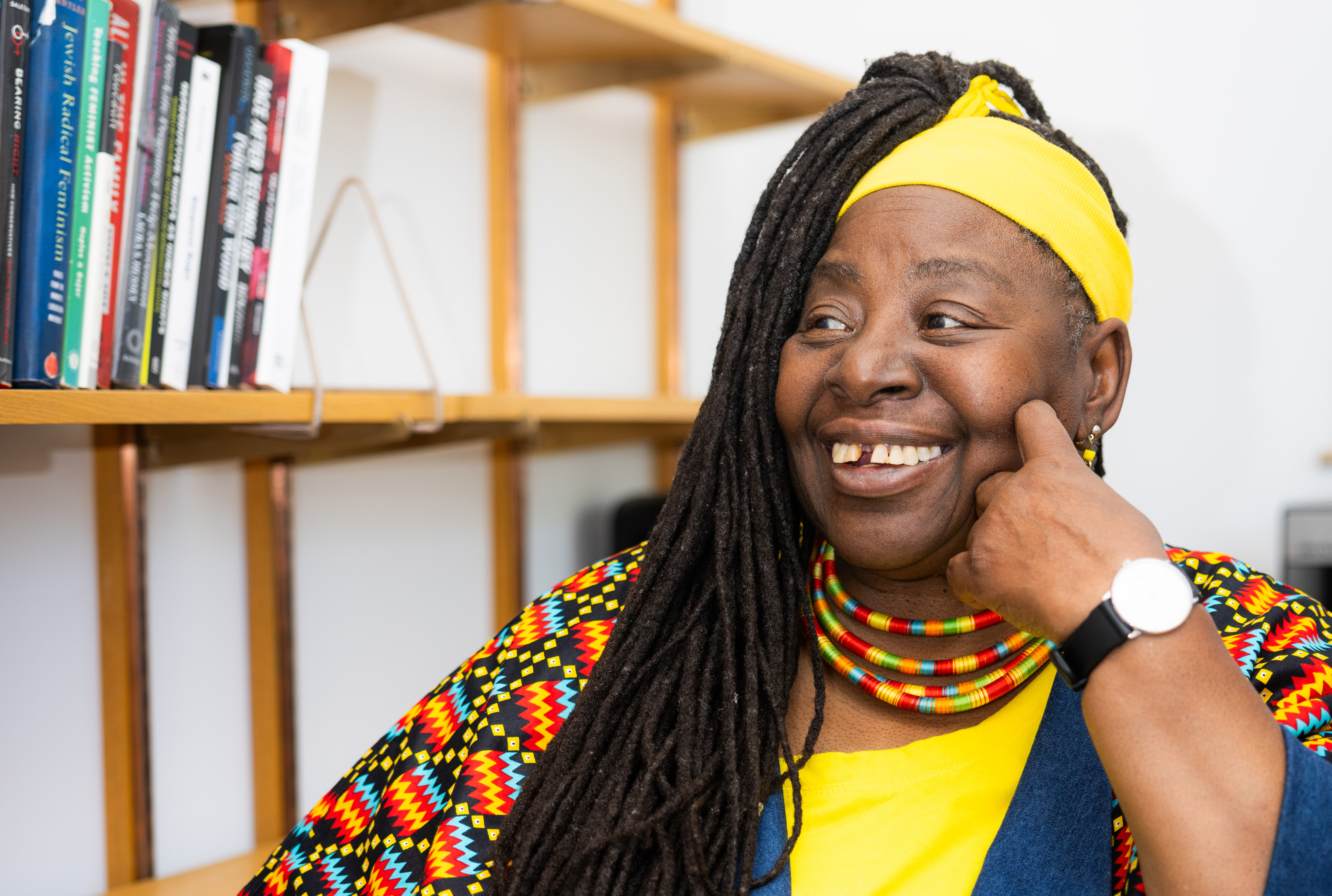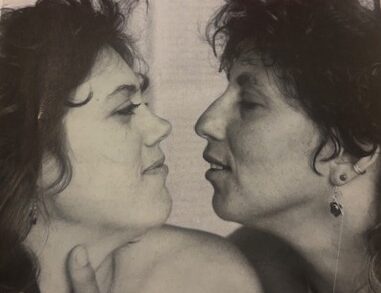By Brenna Curley




In the 1970s, coalition group CARASA made large efforts to overturn the Hyde Amendment .1 While the amendment still remains, they set a precedent for defending reproductive rights in all of its forms .2 Their efforts and core beliefs are reflected in modern reproductive theories, such as the theory of reproductive justice as described by Loretta Ross .3 Both CARASA and Ross focus on the intersectionality of abortion issues rather than just abortion issues themselves.
Transcript
[MUSICAL INTRO]
Brenna: Welcome back to Bren-PR. Today, we will be taking a look back in history and talking about the Committee for Abortion Rights and Against Sterilization Abuse, more commonly known as CARASA. CARASA was formed in 1974 as a group targeting sterilization abuse in particular, going by the name CESA, or the Committee to End Sterilization Abuse.4 This original group was founded in New York by Helen Rodruigez-Triaz, a well-known latina feminist. In 1978.5 The group separated itself from the label of CESA and instead expanded its focus to tackle abortion issues, and opted to change their name to the Committee for Abortion Rights and Against Sterilization Abuse.6 Unlike groups at the time such as Planned Parenthood and the National Organization of Women, they tackled the topic of abortion from an intersectional lens, thinking not only about the right to have an abortion but also about the right to have a child as well.7
Brenna: Along with producing a monthly publication, CARASA conducted mass demonstrations, helped to educate the general public, and perhaps most importantly, helped with legislation.8 One of the most important acts that they helped with was fighting against the Hyde Amendment, which ruled it unconstitutional to allocate federal funds towards abortions. This act made it extremely difficult for impoverished women to have access to very necessary healthcare. However, members of CARASA helped fight against this amendment – they helped to organize exhibits of evidence, and served as attorneys during the court hearing.9 They were especially invested in this case because it infringed on a person’s right to have an abortion, regardless of economic status.10 While this amendment was never overturned, it was ruled unconstitutional in the state of New York, thanks to the help of members of CARASA.11
Brenna: Poverty isn’t an isolated force. Many women are impoverished because they are somehow “othered” in society, and this oppression leads to economic stress. This economic stress prevents lower class people – which disproportionately consists of people of color, trans people, and disabled people – from accessing basic human rights, such as healthcare, including abortions. By systemically oppressing people of color and preventing them from having children by doing things such as withholding proper childcare, healthcare, and education, the government was and has been able to rationalize the neglect of people of color by writing it off as an economic issue rather than a race issue.12 Social justice activist Loretta Ross elaborates on this by saying that the prioritization of white, upper-class babies is both unethical and unconstitutional.13 By stripping women of color of a safe environment to both live in and raise a child, they are being stripped of their fundamental rights. And by being forced to carry children to term, as dictated by the Hyde Amendment, lower-class women are stripped of their fundamental right to choose what to do with their bodies.
ROSS [clip]: …if they had housing insecurity, or fear of losing their jobs, or fear of violence in their lives, that would determine whether they would keep an unplanned pregnancy or not. 14
Brenna: CARASA’s views in the 1970’s built a solid foundation for the reproductive justice framework that Ross posits. The reproductive justice framework is built on three key pillars: the right to give birth to a child, the right to raise a child in a safe and healthy environment, and the right to not have a child.15 The Hyde Amendment falls squarely in the last pillar. CARASA had a special relationship with The Hyde Amendment because it targets poor women of color, a group which have already struggled severely with bodily autonomy through forced sterilization abuse.16 CARASA detailed the court case in which The Hyde Amendment was ruled unconstitutional in incredible detail, noting that the judge found that it violated both the first amendment right to freedom and the fifth amendment right to equal protection.17 One particularly important woman, Janet Gallagher, served to assemble upwards of 800 exhibits of evidence that were showed in court.18 The court, after reaching this decision, said, “abortions are medically necessary to safeguard the pregnant woman’s health…the disentitlement to Medicaid assistance impinges directly on the woman’s right to decide.”19
Brenna: Overall, both CARASA and Loretta Ross’ framework posit that intersectionality is key for everyone to have reproductive freedom.20 While it is important to fight against legislation that directly impedes access to abortions across the board, it is equally important to fight against legislation that targets disenfranchised women. Additionally, it is important to attack oppression at its source by trying to dismantle systems of power that allow for women of color, trans, and disabled women to face higher rates of economic strife than able-bodied, cis white women. Without attacking oppression at its source, we are only tackling the surface layer of the problem.
Brenna: While the Hyde Amendment was never overturned, abortions are now legal across many states, which is the reflection of the work done during the second-wave feminist movement. However, federal protections for the right to an abortion were recently upended, leaving state laws vulnerable to being overturned. Under a largely republican senate and president, state legislations can easily be overturned in the span of four years, reverting some states back to pre-Roe periods. Additionally, some states are currently preventing women from having an ectopic pregnancy removed, and in extreme cases, forcing women to carry fetuses that have died in the womb. Not only is this traumatizing for women to experience, but it can be life-threatening to the mother. This has forced women to seek out of state care for issues that could be life threatening, which is an incredible act of malpractice on the participating states’ parts.
Additionally, the gap in wages between the upper, middle, and lower classes continue to rise. This prevents access to adequate childcare, healthcare, food and housing to underprivileged groups, something that is essential to both CARASA and the reproductive justice framework. Systemic racism, colorism, transphobia and homophobia are alive and well, preventing people of color and queer people from accessing the same resources that straight, cis, white people have. While the decriminalization of abortion is a win across the board, it is important to remember that both CARASA and Ross also fought and continue to fight for the right to have a child – and those who are continuously oppressed do not have the same inherent privileges that straight, cis, white people do. Unless we address systematic oppression at its source, true reproductive justice will never be achieved.
Brenna: I’m Brenna Curley, and this has been Bren-PR.
[OUTRO MUSIC]
Footnotes
- A New Victory for the Right to Choose. CARASA News, Newsletter, March 1980,Vol. IV no. 2,, Karen Stamm collection of Committee for Abortion Rights and Against Sterilization Abuse (CARASA) records, Sophia Smith Collection, SSC-MS-00811, Smith College Special Collections, Northampton, Massachusetts. ↩︎
- IBID ↩︎
- Ross, Loretta, and Rickie Solinger. “A Reproductive Justice History.” Introduction. In Reproductive Justice: An Introduction, 9–30. Oakland, CA: University of California Press, 2017. ↩︎
- Finding aid, Karen Stamm collection of Committee for Abortion Rights and Against Sterilization Abuse (CARASA) records, Sophia Smith Collection, SSC-MS-00811, Smith College Special Collections, Northampton, Massachusetts. ↩︎
- IBID ↩︎
- IBID ↩︎
- IBID ↩︎
- A New Victory for the Right to Choose. CARASA News, Newsletter, March 1980,Vol. IV no. 2,, Karen Stamm collection of Committee for Abortion Rights and Against Sterilization Abuse (CARASA) records, Sophia Smith Collection, SSC-MS-00811, Smith College Special Collections, Northampton, Massachusetts. ↩︎
- IBID ↩︎
- IBID ↩︎
- IBID ↩︎
- Ross, Loretta, and Rickie Solinger. “A Reproductive Justice History.” Introduction. In Reproductive Justice: An Introduction, 9–30. Oakland, CA: University of California Press, 2017. ↩︎
- IBID ↩︎
- macfound. “Fellow Spotlight | 2022 MacArthur Fellow Loretta Ross.” YouTube, September 24, 2024. https://www.youtube.com/watch?v=fVFepXVjt-g. ↩︎
- Ross, Loretta, and Rickie Solinger. “A Reproductive Justice History.” Introduction. In Reproductive Justice: An Introduction, 9–30. Oakland, CA: University of California Press, 2017. ↩︎
- A New Victory for the Right to Choose. CARASA News, Newsletter, March 1980,Vol. IV no. 2,, Karen Stamm collection of Committee for Abortion Rights and Against Sterilization Abuse (CARASA) records, Sophia Smith Collection, SSC-MS-00811, Smith College Special Collections, Northampton, Massachusetts. ↩︎
- IBID ↩︎
- IBID ↩︎
- IBID ↩︎
- IBID; Ross, Loretta, and Rickie Solinger. “A Reproductive Justice History.” Introduction. In Reproductive Justice: An Introduction, 9–30. Oakland, CA: University of California Press, 2017. ↩︎
Sources
A New Victory for the Right to Choose. CARASA News, Newsletter, March 1980,Vol. IV no. 2,, Karen Stamm collection of Committee for Abortion Rights and Against Sterilization Abuse (CARASA) records, Sophia Smith Collection, SSC-MS-00811, Smith College Special Collections, Northampton, Massachusetts.
1980: A New Year of Struggle for Reproductive Rights. CARASA News, Newsletter, January 1980,Vol. IV no. 1,, Karen Stamm collection of Committee for Abortion Rights and Against Sterilization Abuse (CARASA) records, Sophia Smith Collection, SSC-MS-00811, Smith College Special Collections, Northampton, Massachusetts.
Finding aid, Karen Stamm collection of Committee for Abortion Rights and Against Sterilization Abuse (CARASA) records, Sophia Smith Collection, SSC-MS-00811, Smith College Special Collections, Northampton, Massachusetts.
macfound. “Fellow Spotlight | 2022 MacArthur Fellow Loretta Ross.” YouTube, September 24, 2024. https://www.youtube.com/watch?v=fVFepXVjt-g.
Ross, Loretta, and Rickie Solinger. “A Reproductive Justice History.” Introduction. In Reproductive Justice: An Introduction, 9–30. Oakland, CA: University of California Press, 2017.
Woodard, Tiana. “Loretta Ross Doesn’t Believe in Cancel Culture – The Boston Globe.” BostonGlobe.com, November 4, 2023. https://www.bostonglobe.com/2023/11/02/magazine/loretta-ross-has-a-radical-idea/.


